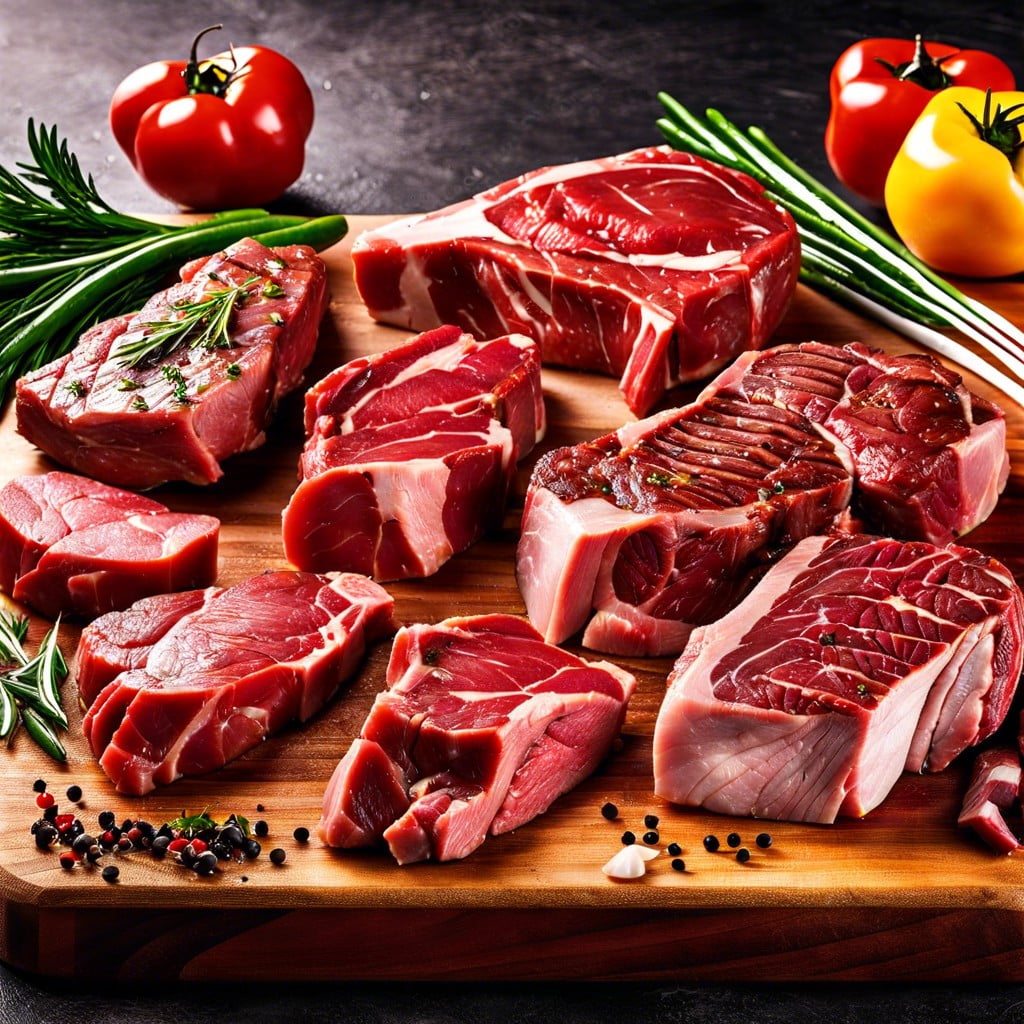Grilling a succulent steak is no magic trick; this article simplifies the process so you can master the art of the grill.
Key takeaways:
- Choosing the right cut of steak: prioritize marbling.
- Preheat the grill for a perfect sear.
- Cook steak at high heat for maximum flavor and juiciness.
- Test for doneness with the press test, timer, or meat thermometer.
- Allow the steak to rest before slicing for peak flavor and tenderness.
Selecting the Right Cut of Steak

Choosing a steak feels like a high stakes game, and truth be told, it kind of is—one where the prize is a flavorful, tender meal. Let’s cut to the chase: marbling is your best friend. You’re on the lookout for those delectable flecks of fat throughout the meat. Why? Because fat equals flavor.
Now, onto the meat and potatoes—ribeye, sirloin, filet mignon, T-bone, and New York strip steaks are top picks for grilling. Each has a different personality in terms of fat content, muscle structure, and flavor.
Feeling lean and mean? Filet mignon is your go-to with less fat but ample tenderness. Wanting to beef up your meal? A heavily marbled ribeye guarantees juiciness. On the fence between flavor and leanness? Sirloin plays it right down the middle.
Thickness is your next play; aim for at least 1-inch thick steaks to get that idyllic charred outside without turning the inside into shoe leather. Remember, your steak shouldn’t look like it’s been on a diet. Thin may be in for fashion, but definitely not for your grilling masterpiece.
Preheating the Grill: Achieving the Perfect Sear
Crank it up — high heat is your best friend for that coveted crust that steak aficionados rave about. Aim for a grill surface temperature around 450°F to 500°F before introducing the meat to the grates.
Patience pays off. Give your grill the time it needs, often about 15 minutes for gas and a bit longer for charcoal, to reach the sweet spot for searing. Tempting as it is to rush, a properly preheated grill ensures even cooking and the best flavor.
Keep the lid down while preheating to speed up the process. This also helps clean the grill, making it easier to brush off any bits left from your last BBQ adventure.
Conduct the hand test to gauge readiness. Hold your hand about 5 inches above the grill; if you can keep it there for only 2-4 seconds, the heat is high enough.
Remember, an adequately heated grill not only gives your steak a superior sear but also helps prevent sticking — making flipping the steak smoother than a well-aged bourbon.
Cooking Temperature: High Heat for Steaks
Cranking up the heat is essential for achieving steak nirvana. Here’s why:
1. Maillard Reaction Magic: High temperatures bring about a beautiful brown crust through this chemical marvel, delivering flavor that truly makes your steak sing.
2. Lock in Juices: A sizzling grill plate sears the steak swiftly, creating a seal that keeps those succulent juices where they belong — inside your steak.
3. Speed and Efficiency: With the heat dialed up, your steak cooks faster, reducing the risk of drying out and keeping dinner on schedule.
4. Consistent Cooking: Uniform high heat means more predictable results, so once you perfect your technique, you’re set for repeated success.
Remember, while your grill throws a fiery punch, maintain vigilance! Steaks demand attention, lest they go from perfect to charcoal impersonators in a flash.
Testing for Doneness: Feel, Time, and Meat Thermometer
Get your grill game on point with these surefire tactics to check if that steak is ready to plate up. Start by pressing the steak’s surface – if it’s rare, it’ll feel soft and squishy; medium gives a bit of resistance; well done is firm.
Not feeling the press test? Stick to a timer, but remember, each steak dances to its own tune depending on thickness and heat. For precision that would make a Swiss watch blush, a meat thermometer is your best bud. Aim for 135°F for medium-rare; 145°F for medium; 160°F for well done.
Keep this trio in your back pocket and serve up some serious “steak-housery” at your next barbecue bash.
Resting Time: Importance in the Grilling Process
Resting your steak is akin to a short nap that invigorates you. Imagine juices as energy that redistributes through the meat during this pause.
Slicing into steak too soon is like waking it abruptly, causing valuable juices to escape onto the plate, not in your mouth. Aim for a 5 to 10-minute rest after grilling, depending on thickness, shielding steaks with foil to keep warm.
This step ensures peak flavor and tenderness, providing an opportunity for the heat to settle and juices to permeate the steak evenly. Patience here pays off in spades for that first succulent bite.

